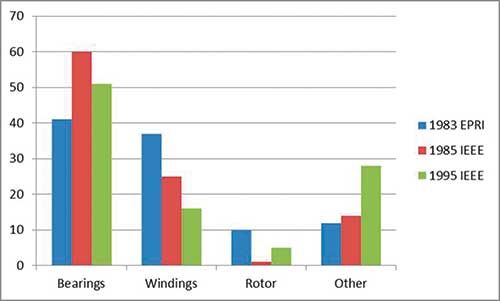Unveiling the Silent Threat: Detecting Electric Motor Defects
Electric motors play a crucial role in various industries, powering everything from manufacturing equipment to household appliances. Ensuring the reliability and efficiency of these motors is essential for maintaining smooth operations and preventing unexpected downtime. However, one silent threat that often goes unnoticed is the presence of defects within the motors. Detecting these defects early on can save time, money, and potential safety risks associated with motor malfunctions. By implementing proactive measures to identify and address electric motor defects, businesses can significantly improve their overall productivity and reduce maintenance costs in the long run.
Types of Electric Motor Defects
Stator Winding Faults:
Stator winding faults are a common issue in electric motors, often caused by insulation breakdown or aging. These faults can lead to phase imbalances, overheating, and even complete motor failure if left unattended.

Rotor Bar Defects:
Defects in the rotor bars of an electric motor can result from factors such as manufacturing inconsistencies or mechanical stress. When rotor bars are damaged or broken, motor performance can be affected, manifesting as vibration, increased noise, and reduced efficiency.
Bearing Failures:
Bearing failures in electric motors can be attributed to factors like improper lubrication, contamination, or misalignment. Detecting early signs of bearing wear, such as unusual noise or increased friction, is crucial to prevent secondary damages to the motor components.
Importance of Early Detection
Detecting electric motor defects early is crucial for ensuring optimal motor reliability. By identifying issues in their early stages, potential catastrophic failures can be mitigated, resulting in reduced downtime and maintenance costs. Early detection also allows for predictive maintenance strategies to be implemented, maximizing the lifespan of the motor.
Moreover, early detection of electric motor defects can lead to enhanced safety in industrial settings. Recognizing faults early on helps prevent accidents that may occur due to motor malfunctions. Safety measures can be promptly taken when issues are detected in the initial phases, safeguarding both personnel and equipment from potential harm.
In addition to proactive maintenance benefits, early detection of electric motor defects contributes to improved operational efficiency. Addressing problems at an early stage prevents performance degradation and ensures that the motor operates at optimal levels. This proactive approach not only enhances productivity but also promotes sustainable energy consumption practices in various applications.
Methods for Detecting Motor Defects
Firstly, visual inspection plays a crucial role in detecting motor defects promptly. By closely examining the motor for any signs of physical damage, such as corrosion, worn-out components, or loose connections, technicians can identify potential issues early on before they escalate into more severe problems.
Secondly, vibration analysis is another effective method for monitoring motor reliability. By analyzing the vibration patterns of the motor using specialized equipment, technicians can detect abnormalities that may indicate underlying defects. Anomalies in vibration signatures can provide insights into the health of the motor and help preemptively address potential failures.
Lastly, thermal imaging technology is a valuable tool for detecting motor defects non-invasively. By capturing infrared images of the motor during operation, technicians can identify hot spots or temperature variations that could signify internal faults, such as insulation degradation or overheating components. This method enables early detection of defects and facilitates preventive maintenance strategies to ensure motor reliability .